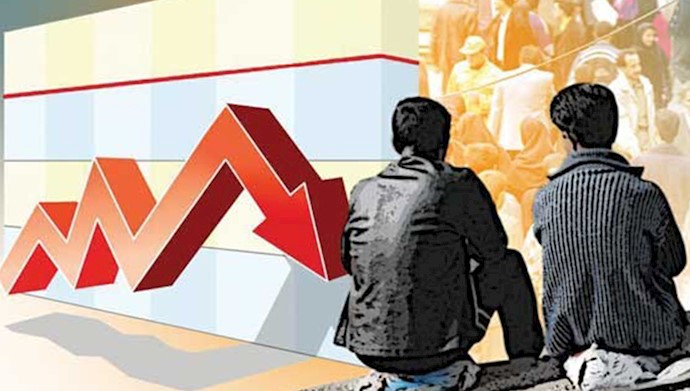Analysis by PMOI/MEK
Iran, Sept. 18, 2018 – The Iranian regime is facing ever increasing crises with each passing day. The inner circle of the ruling regime refers to them as challenges and “super challenges.” High ranking officials, such as Vice President Es’hagh Jahangiri, Majlis (parliament) speaker Ali Larijani and others have announced up to 30 super challenges, referring to enormous hurdles with extensive repercussions. This wide variety of challenges are numerous crises often leading to one another.
Economic crises at every level consists of unemployment now topping the 8 million mark, according to the regime’s own officials. However, economists are putting these numbers as high as 15 million.
The liquidity crisis brought about by printing currency bills without back up and/or holding collateral equal value. According to regime sources, the volume of printed currency without collegial equal value are increasing at a daily rate of 16 trillion rials per day (equal to around $381 million based on the regime’s 42,000/$ ratio). This is creating a devastating tsunami of all sorts.
Economic depression and domino-like closure of factories and workshops are wiping out the remnants of national industries and domestic production.
Unprecedented class inequality: People related to the ruling elite own 75 percent of all Iranian bank holdings, according to a state-run website. Accordingly, more than 30 million Iranians are living in absolute poverty, unable to make ends meet and to cover their basic minimum needs of daily life. The Iranian regime’s Chamber of Commerce chief warned, “If things continue on this tract, we will be facing famine in 30 months.”
Social crises include water shortages, ecosystem problems, the drug addiction epidemic, malnutrition and …
Senior regime officials are acknowledging this subject, admitting their inability and failure to rectify them. They express concerts that such failures will follow far more serious consequences for the regime as a whole and are threatening its very existence.
The existence of such crises are nothing new for the Iranian regime. Therefore, what makes this period different from the past? Until the last presidential election in Iran, or even last year, it was always presumed as natural factional disputes and politicians jockeying for their share of power. However, despite that underlying factor, the Iranian regime is now also fighting for its survival, too. And this makes everything so different this time around.
“Right now, 80 percent of the people are unhappy about the status quo. If this reaches the 90 percent mark and public opinion is aggravated, God forbid, we will enter an ominous situation which would be very costly to get out of,” said the Iranian regime’s deputy homeland minister.
Background
Two major and specific reasons can be mentioned for the grave situation the Iranian regime is in.
- The explosive social conditions after the Dec/Jan uprising. This has changed everything. When summoned recently by the regime’s parliament. Iranian regime President Hassan Rouhani specifically said everything changed after Dec 26, 2017.
- Changes in international and regional circumstances, and more specifically, an end to the appeasement policy from Washington are bringing an end to the Iranian regime’s bullying.
It is also worth noting that the Iranian regime is currently facing important developments. On September, U.S. President Donald Trump chairs a special United Nations Security Council session to discuss Iran’s issues and its regional meddling. Less than a week later, October 2nd, is Tehran’s last chance to sign the FATF anti-money laundering treaty.
If Tehran fails to do so by that deadline, it will be blacklisted and will lead to stopping all banking relations with a large number of banks and financial institutions in over 200 FATF member states.
Finally, the second round of extensive U.S. sanctions will come into effect on November 4th, including oil and banking sectors. It will hurl the regime back to the pre-JCPOA period with even more far-reaching consequences.
The extend and seriousness of all these deteriorating and deepening crises are already felt by the regime with a number of figures sounding the alarm for the downfall of Iran’s ruling mullahs.





